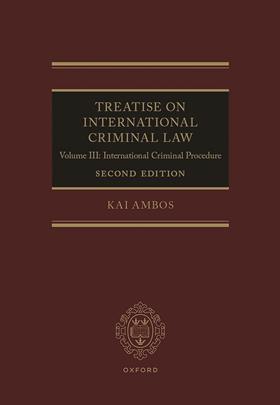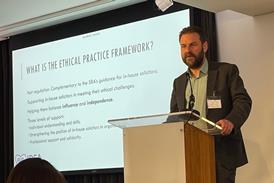Treatise on International Criminal Law: Volume III: International Criminal Procedure (second edition)
Kai Ambos
£195, Oxford University Press
★★★★✩
The purpose of international criminal law is to ensure accountability for the most serious crimes that concern the international community, such as genocide, crimes against humanity and war crimes, and to prevent their recurrence.
While crimes against the basic principles of humanity are tragically nothing new to the history of mankind, as Ambos points out, their prosecution on an international level is a relatively recent phenomenon. Given the gravity of this purpose and what it means to the world we live in, the procedure by which such laws are implemented, and the way in which justice is carried out and is seen by the world to be carried out, are of the utmost importance. The original intention was stated by president Truman at the time of the Nuremberg Trials: ‘The world should be impressed by the fairness of the trial.’ As quoted by Ambos, international criminal procedure is only ‘a more specific and subsidiary discipline’ of international criminal justice.
This volume of the Treatise is essential reading for anyone working in or exploring the world of international criminal justice, offering a comprehensive analysis of the procedures and implementation of international law by international criminal tribunals and the International Criminal Court (ICC). It will also resonate with domestic criminal practitioners who will recognise familiar procedural steps magnified and reshaped in the international context.

Ambos explores the development of international criminal procedure in granular, historical and comparative detail, from the early days of the Nuremberg and Tokyo trials to the present-day ICC and ad hoc tribunals. The fundamental elements of the procedure – that is, human rights and fairness of the proceedings – remain as a thread through the book. Ambos explores newer developments, such as concerns with efficiency, the interrelationship between the process and the interests of other actors such as victims, digital evidence and submissions, and trial management.
It is fascinating to learn of the challenges encountered in establishing any singular procedural framework which can be implemented globally. The cultural, legal and linguistic diversity of participating states means that no single approach can ever fully satisfy all states. Ambos examines all the stages of proceedings and issues familiar to criminal practitioners –initial investigation, representation, disclosure, witness evidence, admissibility, enforcement etc – but on an international scale, and in the context of macrocrimes. This is criminal procedure magnified in every way. A recurring theme is the tension between the common law/civil and adversarial/ inquisitorial traditions, and domestic or local procedures, versus international procedures and their impact on the development of the procedure.
As with any legal system, it can only be as good as those who implement it. It was eye-opening to learn how even the most carefully designed selection procedures do not shield the ICC from the appointment of candidates –sometimes politicians with no legal training or understanding – based on geopolitical interest rather than merit. It is a sobering reminder of the vulnerability of international justice.
For practitioners, this book is not just theory. It is a practical, deeply informed guide for the procedural rules which apply. The sheer volume of abbreviations used in the field makes the inclusion of a detailed Table of Abbreviations especially welcome. Ambos’ work is rigorous, comprehensive and unflinching.
Sally Azarmi is a solicitor and director at Azarmi & Company































No comments yet